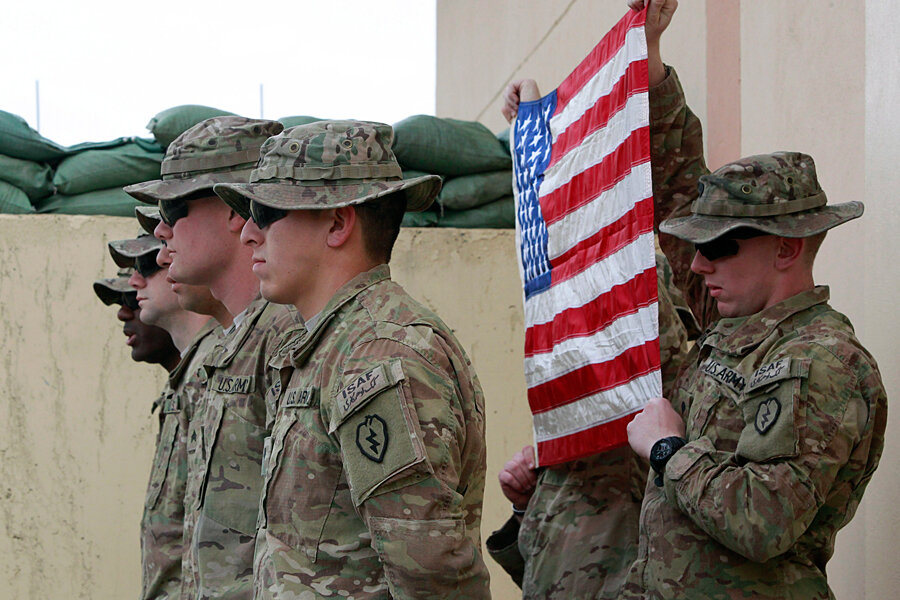Many soldiers prone to suicide even before they enlist, study says
Loading...
Researchers reported Monday that most American soldiers who attempt suicide had preexisting mental health issues before enlisting in the armed forces, raising new questions about how to address sky-high suicide rates in the US military.
The research, published as three papers in JAMA Psychiatry, found that more than a quarter of current soldiers have at least one mental disorder, a rate about twice that for the general public. More than three-quarters of soldiers with mental illness say that their disorders preceded their enlistment in the armed forces, and some 60 percent of solider suicide attempts can be traced to those preenlistment mental troubles, the report said.
The findings reopen the debate about how to best address a military suicide rate that is above the rate for the general population. The authors suggest that increased efforts to address new soldiers’ mental health issues early on – before preexisting issues become aggravated during and after deployments – might be one solution.
The papers draw on data from the Army's STARRS (Study to Assess Risk and Resilience in Service members) program, launched in 2009 as part of a massive effort to understand an alarming spike in armed forces suicides beginning in 2004. By 2008, that rate had risen so high that it exceeded the civilian rate, with 20.2 suicide deaths per 100,000 soldiers versus 19.2 suicides per 100,000 civilians.
The results of the survey complicate a neat narrative of soldier suicide – going to war causes mental illness – suggesting that a host of factors, sometimes existing well before a soldier is even a soldier, are also an influence on suicide risk.
The rate of intermittent explosive disorder – which has been linked to following through on suicidal thoughts – is about six times higher among soldiers than it is in the general population, according to one of the papers. And more than 80 percent of current soldiers’ behavioral disorders, including intermittent explosive disorder, as well as substance abuse issues and ADHD, preceded their enlistment, according to the paper.
“The kind of person who joins the army is not your typical person,” says Ronald Kessler, professor of Health Care Policy at Harvard Medical School and senior author of the paper. “They tend to already have a lot of anger, ADHD, and conduct problems.”
Suicide attempts and suicidal thought rates among soldiers were either on par or below those of civilians. But almost 60 percent of soldiers who ever had suicidal thoughts had those thoughts before enlisting, a second paper reported. And almost half of soldiers who had ever made a suicide attempt had done so for the first time before joining the armed forces, according to that paper.
Other kinds of mental disorders, including depression, were not higher in preenlistment soldiers than in the general population, but developed to be so after enlistment.
The results of the report offer possible courses of actions for curbing soldier suicides, says Dr. Kessler.
One might be to tighten recruitment standards, but Kessler says that is liable to be ineffective, pressing a potential enlistee to hide his or her mental problems, with what could be explosive repercussions later on. A better course of action might be to bolster efforts to identify new recruits with mental issues and reach out to them with support similar to that offered to soldiers after their return from war-zone deployments, he says.
“It’s just unrealistic to say, 'We’re going to have an Army where no one is mentally ill,' ” says Kessler. “But it is possible to recognize that the people coming into to your business – because the Army is a business, just like any other – are a different kind of people than other people.”
A separate paper, published the same day in the journal Psychological Medicine and also drawing on STARRS data, provided evidence that those with high suicide risks could be identified, and addressed, early on. That paper found that junior enlistees who are deployed within a year of joining the service have a much higher suicide rate – around 70 to 80 per 100,000 people – than do other members of the armed forces. (Junior enlistees are only deployed in rare circumstances.)
“Their suicide risk is sky-high,” says Kessler, an author on that paper, as well.
“If you’re going to send them, you should be aware that this kid – and they are kids – has this kind of suicide risk,” he says.






